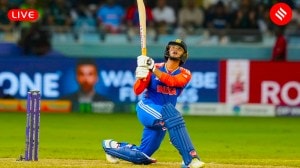PSLV places record 10 satellites into orbit
Setting a world record, India's Polar rocket successfully placed ten satellites into orbit in a single mission.

Setting a world record, India’s Polar rocket on Monday successfully placed ten satellites, including the country’s remote sensing satellite, into orbit in a single mission.
The ten pack launch of the Indian Space Research Organisation (ISRO) saw the 230-tonne Polar Satellite launch Vehicle (PSLV-C9) carry the heaviest luggage – 824 kgs – and put into orbit an Indian Mini Satellite and eight foreign nano satellites besides the Cartosat-2A remote sensing satellite.
At the end of the 52-hour countdown, the PSLV-C9, with alift-off mass of 230 tonne, blasted off from the launch pad at the Satish Dhawan Space Centre and soared into the clear sky in a textbook launch.
Fourteen minutes after lift off, the fourth stage of the ISRO’s workhorse launch vehicle, in its 13th flight, injected the ten satellites, into the 635 km polar Sun Synchronous Orbit (SSO).
This is for the first time that ISRO has put ten satellites in orbit in a single launch. This is also PSLV’s twelfth successful flight.
It is for the first time in the world that ten satellites were launched in a single mission. Russia had earlier launched eight satellites together.
Besides the 690 kg Indian remote sensing satellite CARTOSAT-2A and the 83 kg Indian Mini Satellite (IMS-1), the rest eight Nano Satellites were from abroad.
This is the third time, the PSLV has been launched in the core alone version, without the six solid propellant first stage strap-on motors.
Terming the launch “satisfactory”, ISRO Chairman G Madhavan Nair said “all parameters worked wonderfully well.” “It is a proud moment for ISRO as it put 10 satellites into the orbit in a single launch and I am extremely proud of the entire team,” Nair said.
He said initially there was some anxiety about the weather conditions but “thankfully everything went well”.
Mission Director Dr Kosy said the launch proved that the PSLV was dependable and capable.
“This has proven that the PSLV can be depended upon and that puts more responsibilities for us in the next coming Chandrayan mission,” Kosy said.
CARTOSAT-2A which was put in orbit by PSLV-C9 is the latest state-of-the-art remote sensing satellite weighing 690 kg, carries a Panchromatic Camera (PAN) capable of taking black and white pictures in the visible region of electromagnetic spectrum. It would be used for mapping purpose and management of natural resources.
The IMS-I, developed by ISRO for a remote sensing, has two optical payloads–a mutispectral camera (Mx Payload) and a Hyperspectral Camera (HySI Payload), which would operate in the visible and near infrared regions of the electromagnetic spectrum.
The eight Nano Satellites, built by universities and research institutions in Canada and Germany, were launched under a commercial agreement.
The satellites, with a total weight of about 50 kg, were built to develop nanotechnologies for use in satellites and for the development of technologies for satellite applications.
Photos



- 01
- 02
- 03
- 04
- 05



























